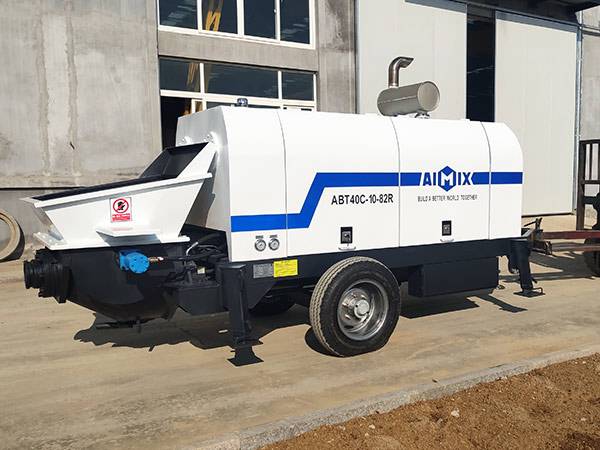


Stationary concrete pumps have emerged as the silent workhorses of downtown high-rise projects
Urban construction projects face an escalating challenge: delivering massive concrete volumes amidst tight spaces, noise restrictions, and relentless schedules. Stationary concrete pumps have emerged as the silent workhorses of downtown high-rise projects, combining high-capacity placement with minimal site disruption. Unlike their truck-mounted counterparts, these fixed systems operate at noise levels below 72 decibels—quieter than most construction equipment—while delivering precise concrete placement at rates exceeding 150 cubic meters per hour.
The advantages extend beyond acoustics. Stationary pumps require 40% less staging area than mobile units, critical when every square meter of urban real estate carries premium value. Their continuous-duty hydraulic systems maintain consistent pressure for marathon pours lasting 36+ hours without performance degradation. This combination of compact operation and relentless output makes them indispensable for projects where concrete placement can’t become the critical path.
Stationary pumps paired with robotic boom systems achieve vertical placement rates unmatched by mobile units. The fixed mounting provides stability that enables precise concrete delivery to heights exceeding 600 meters without the sway concerns of truck-mounted booms. Projects like the Jeddah Tower have demonstrated how stationary systems can maintain 95% pump efficiency even at extreme elevations.
Modern stationary pumps install within 6×8 meter footprints, often utilizing existing building cores or elevator shafts for placement. Some models feature modular designs that assemble inside standard shipping containers, transforming constrained urban sites into efficient concrete distribution hubs. This compactness proves invaluable when working within sidewalk sheds or shared construction corridors.
Grid-connected stationary pumps eliminate diesel engine noise entirely, with sound levels comparable to office HVAC systems. Their electric motors produce zero onsite emissions—a growing requirement for projects pursuing LEED certification or operating under strict urban air quality mandates. When paired with renewable energy sources, they enable carbon-neutral concrete placement.
Advanced harmonic filters and isolation mounts reduce structure-borne noise by 85% compared to conventional concrete trailer pump. This prevents the low-frequency vibrations that can disturb sensitive adjacent operations or nearby occupied buildings—a frequent complaint with traditional concrete equipment.
Stationary pumps feature redundant hydraulic cooling and lubrication systems that enable uninterrupted operation during critical pours. Automatic grease dispensers maintain component protection without shutdowns, while self-cleaning filters prevent performance degradation. These features allow continuous concrete placement through shift changes and material delivery cycles.
Load-sensing hydraulics and AI-driven pressure algorithms maintain optimal concrete flow rates regardless of vertical height or horizontal distance. The system automatically compensates for line wear and material variations, preventing the pressure spikes that cause costly blowouts in congested urban sites.
The rise of stationary concrete pumps in dense urban construction reflects a broader industry shift toward equipment that delivers maximum performance with minimal disruption. As cities grow denser and noise regulations stricter, these quiet powerhouses will become the standard for high-rise concrete placement—turning what was once the noisiest, most disruptive phase of construction into a model of efficiency and neighborhood consideration. Their ability to work relentlessly while barely being heard represents the future of urban concrete construction.
